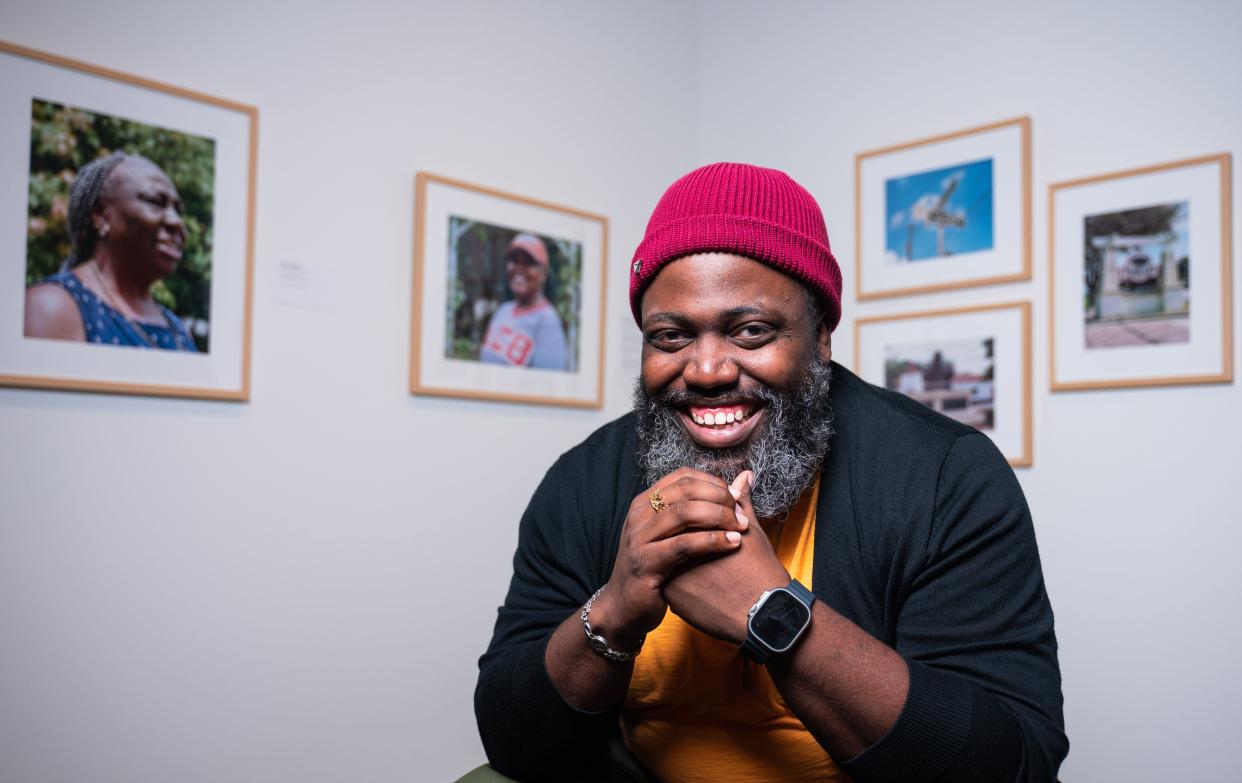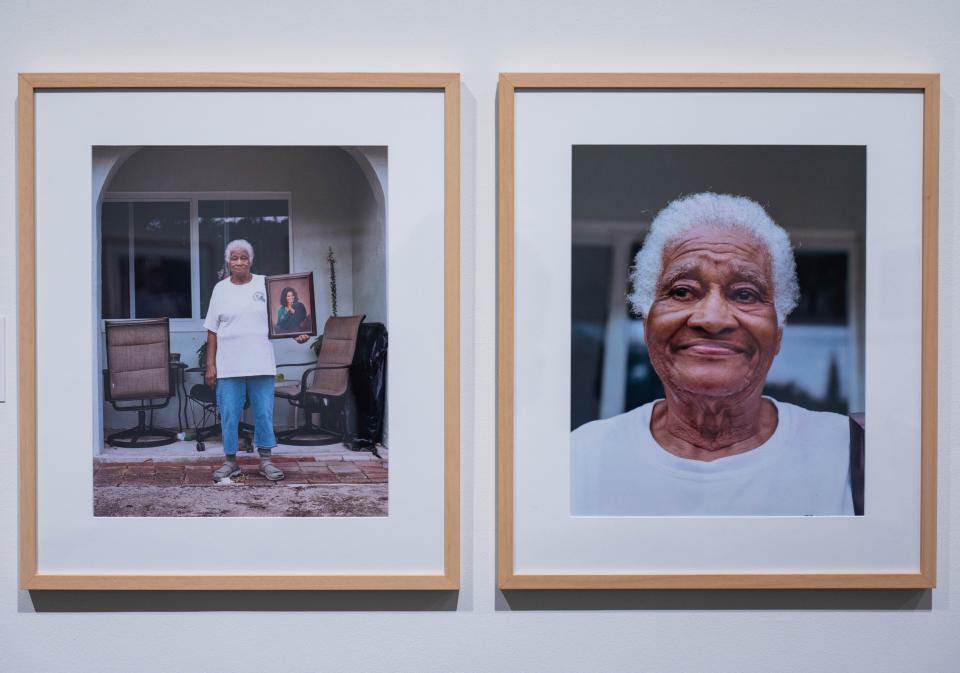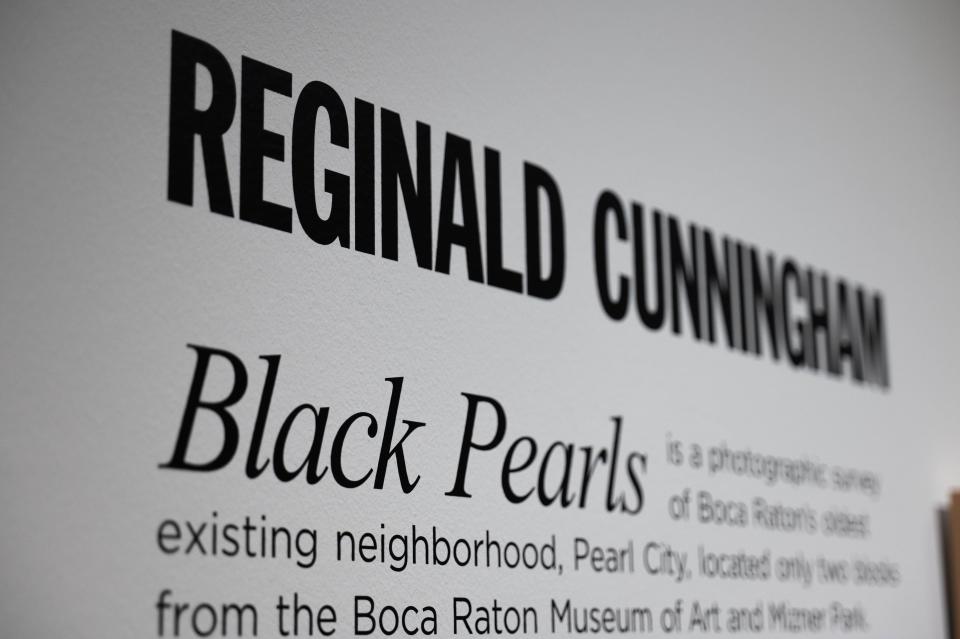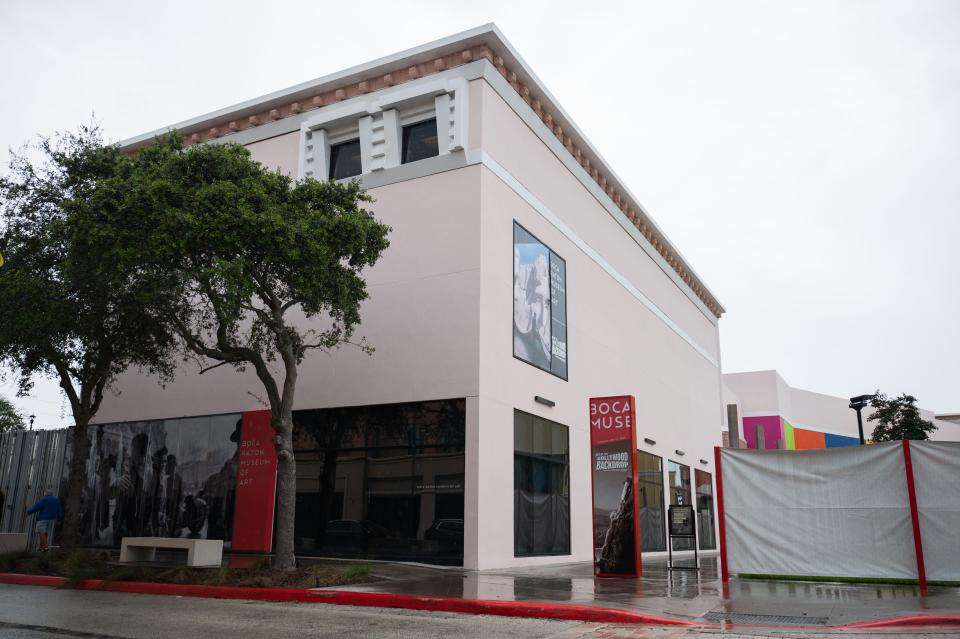Pearl City uncovered: Exploring Black Boca neighborhood's rich history through portraits

BOCA RATON — Two blocks away from the greenery, peach walls and high-end shops that line Boca Raton’s Mizner Park quietly lies the city’s oldest existing neighborhood.
Pearl City was first home to blue-collar Black workers who settled in the area in 1915. Many worked on nearby farms, and settling here would help with their commutes. Today, some of its initial descendants remain.
Last year, Washington, D.C.-based photographer Reginald Cunningham was commissioned to photograph them for the Boca Raton Museum of Art. “Black Pearls” would become the name of the exhibition.
It was one of the goals he’d set for himself back in 2020, to secure a solo gallery. But when he set out to capture the essence of the neighborhood, he was greeted with rejection after rejection until he met Katie Mae Goddard.
Cunningham was not photographing anybody just yet. He was knocking on doors to get to know people. “Who wouldn't want to see themselves reflected in the museum?” he thought. Most people, it turns out.

How Boca Raton is growing:After 5 years and much hand-wringing, Boca's Mizner Park will transform into performing arts center
Enjoying the outdoors:Five things to know about Boca Raton's new waterfront park: Ocean Strand Park
'A great moment for Boca Raton':Brightline station opens for business
Goddard, who was in her front yard as he made his initial rounds through the neighborhood, was one of the first to actually speak with him. Through her, he learned that somebody had once come by to chronicle the history of Pearl City, taking artifacts from different families and never returning them, or chronicling anything. It made sense why nobody wanted to speak with him.
With the help of a source familiar with the community, he was able to get Goddard to sit down for an interview. They sat in her living room for about two hours, as Goddard shared her story. Photographs of her family covered the walls. Cunningham told himself he had to photograph her for his exhibition that day.
Goddard insisted he photograph a portrait of her younger self instead. They settled on Goddard posing on her porch, holding the portrait. In jeans and a white T-shirt, she stands before her patio chairs, portrait in hand.
Cunningham recognizes the beauty in both versions of Goddard.
“Even in how she looks in the photo that I took, there's an essence of beauty to that,” he said. “She's got this really stark white hair, her face has a lot of texture to it. She is a microcosm of what is amazing about the people in Pearl City.”
It ended up being one of his favorite pictures in the gallery. He shot it, as he did all 24 in the exhibition, in medium-format film — which he taught himself to use when the pandemic started. Each time he’d revisit Pearl City, he’d practice getting the lighting and settings right, and even shoot hundreds of photos, digitally, as backups.
Portraits showcase dignity
There’s a reason every image featured in “Black Pearls” is a portrait. There’s a certain intimacy to portraiture, Cunningham said. He’d just discussed it on Twitter.
“Someone was basically talking about the fact that if you don't find Black people beautiful, then it is hard to tell their story, to photograph them, so on and so forth,” he said. You also have to respect your subject, if you want your portrait of them to be any good, he added.
An issue in the media today, Cunningham said, is major magazines hiring white photographers to photograph Black people, and the pictures not turning out right. Cunningham believes that’s a reflection of a lack of love and respect for these Black people. It’s exactly what he wanted to avoid when he took on “Black Pearls.”

In order to do so, he knew his subjects would have to get vulnerable with him. It was an effort to humanize Pearl City, after all.
“People in Boca Raton drive past it every day, right?” he asked. “How could I bring them into this space — a museum space that is typically an inherently white space — and humanize them, in such a way, with dignity and beauty, that makes people want to know more about them?”
Portraiture, he found, was the way. With the help of Candace Cunningham, he also was able to capture the oral histories of Pearl City’s present-day residents and the children of its original settlers, who have now moved to other cities. Their excerpts play from a TV hanging on the wall at the museum, as visitors enter the gallery. Handwritten letters from the first people to buy property in 1937 sit in a glass case.
“It's a very poignant exhibition dealing with a history that most visitors here don't know anything about, or the fact that there is a Pearl City that's two blocks away from the museum," said Irvin Lippman, executive director of the Boca Raton Museum of Art. "To be able to tell that story, it's very important. It’s been sort of eye-opening for our visitors."
Most visitors are from southern Palm Beach County. About half come from elsewhere, and out of the county.

Residents determined to preserve Pearl City
The Pearl City neighborhood, in Cunningham’s eyes, is reflected in almost every city in the United States. The difference is that, in many other cities, it no longer exists. Kinloch, Missouri, that state's oldest Black community, has been lost to redevelopment. Interstate 70 was constructed directly through it. Cunningham, who visited Kinloch, noticed its stop signs no longer even had their red color.
But Pearl City’s residents are determined to keep it theirs. Almost every person Cunningham spoke with told him about the calls, texts and letters they receive, almost daily, from people wanting to buy their homes. They all say no.
“That is really hard when you may not have a lot of money,” he said. “If someone comes in and offers you below the rate for your house, but money that could put you in a different financial situation.”
Cunningham started using his photography as a source of income in 2017. His mother was a photographer on the side, and he’d been around it his whole life, reloading her camera between shoots at weddings as a kid. Growing up, he was never really interested in reading the magazines scattered throughout his house. The pictures inside them are what captured his interest.
He felt a pull to take photographs of his own when Michael Brown was shot and killed in Ferguson, Missouri, in 2014. He wanted to create images that told the story of what was actually happening, versus what was being seen in the news. It wasn’t an accurate representation of the protesters, or their families, he thought. The move to portraiture came around 2016.
When curating the images for “Black Pearls,” Cunningham wanted visitors to the museum to feel inspired to learn more about a community that’s in their backyard, off Glades Road near Dixie and Federal highways. He also hoped it would ramp up support for getting Pearl City designated as a historic district.
“I felt honored that they trusted me to tell their story,” Cunningham said. “They trusted me to put them in this space. … I felt joy, I felt laughter, I felt community, I felt reunion.”
The exhibition, which opened Sept. 3, runs through Jan. 29. Tickets for adults are $16 and can be found at bocamuseum.org.
Jasmine Fernández is a journalist covering Delray Beach and Boca Raton at The Palm Beach Post. You can reach her at jfernandez@pbpost.com and follow her on Twitter at @jasminefernandz. Help support our work. Subscribe today.
This article originally appeared on Palm Beach Post: Black Pearls exhibit at Boca Raton Museum of Art tells Pearl City's story

